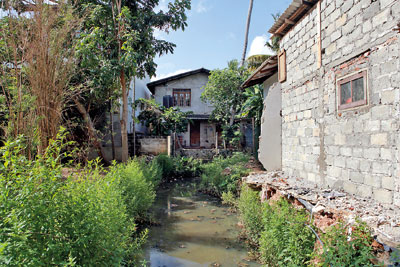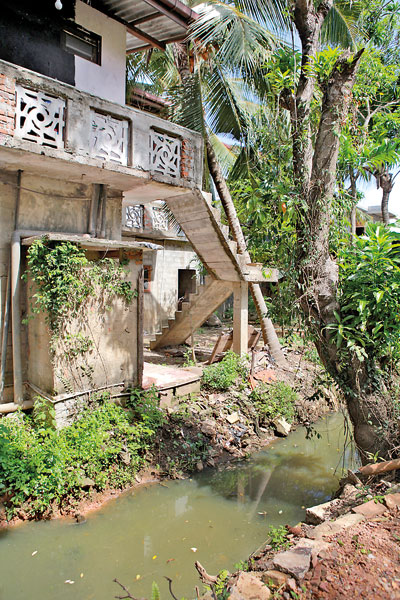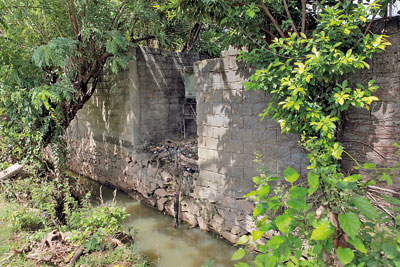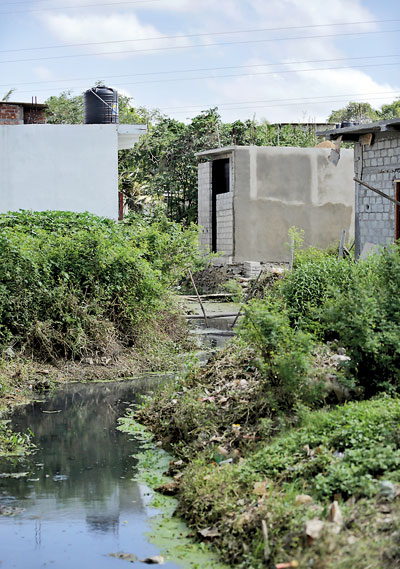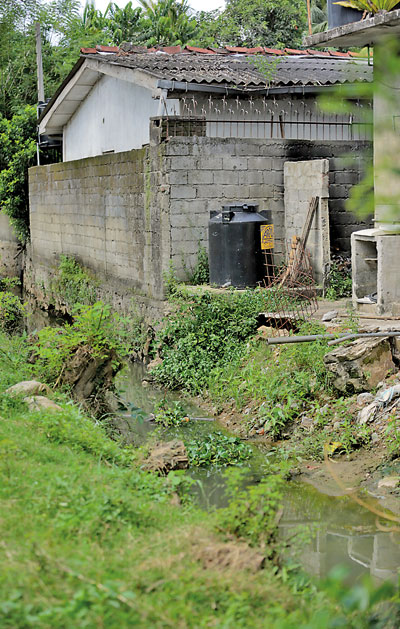News
More than 100 unauthorised structures in Kolonnawa to come down
Part of operation to minimise flooding, says SLLRDC
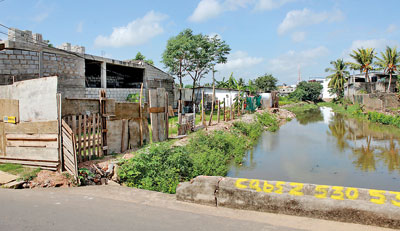
Our photographer Sameera Weerasekera captured these illegal constructions in the Wellampitiya Kotikawatte areas
More than 100 unauthoried structures within the Kolonnawa electorate have been identified for demolition, a senior official of the Sri Lanka Land Reclamation and Development Corporation (SLLRDC) said.
The move is part of an ongoing operation to minimise the risk of flooding during heavy rains by pulling down unauthorised structures that obstruct canals and waterways.
SLLRDC’s Deputy General Manager (Drainage and Reclamation) Eng S. P. Muthumala said the main reasons for flooding in Colombo city are illegal land filling and structures coming up in unsuitable areas.
“When the free flow of water is obstructed the water remains or will flow to low-lying areas which result in floods,” he said..
He said illegal constructions have mushroomed in Kolonnawa which is also on a low- elevated area from sea level.
“The area floods due to its low elevation and in addition the largest number of unauthorised structures are erected here. Over 124 places have been identified and the owners will be taken to court as they are raising objections.
He said it was necessary to demolish the structures as they were concerned about the adverse effects on the environment, and the protection of the embankment of canals and reservation areas. He said only constructions that came up after 2010 July were being targetted as the regulations against illegal constructions came into law only then.
Mr. Muthumala said according to the gazette houses or buildings that come up near canals should have at least a reservation area of 6.5 metres.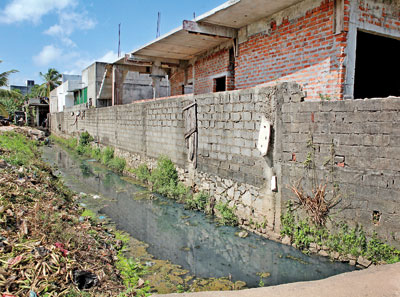
“ In some instances we pulled down only parts of the buildings that were obstructing the canals and waterways, while in others only the sewerage lines that had been turned to the canals were removed while the houses were left in tact.
Mr. Muthumala also stressed that local authorities should be more strict when approval was being sought for buildings especially near canal areas He added they should retain details when approval was being granted and the SLLRDC should be furnished with those details.
He said if the SLLRDC is informed about ongoing constructions they provide expertise on planning and make frequent site visits to ensure that there was no obstruction of the canal or any other waterways.
Mr. Muthumala also added that the UDA usually had a programme to resettle people living in unauthorised constructions near canals, in apartments and develop the land after the structures are removed.
However, painting a different picture, another SLLRDC official said in many instances they had to seek the support of the Navy and Army to remove structures as people objected. He also added that in some instances they were unable to carryout their demolishing activities due to undue political interference.
